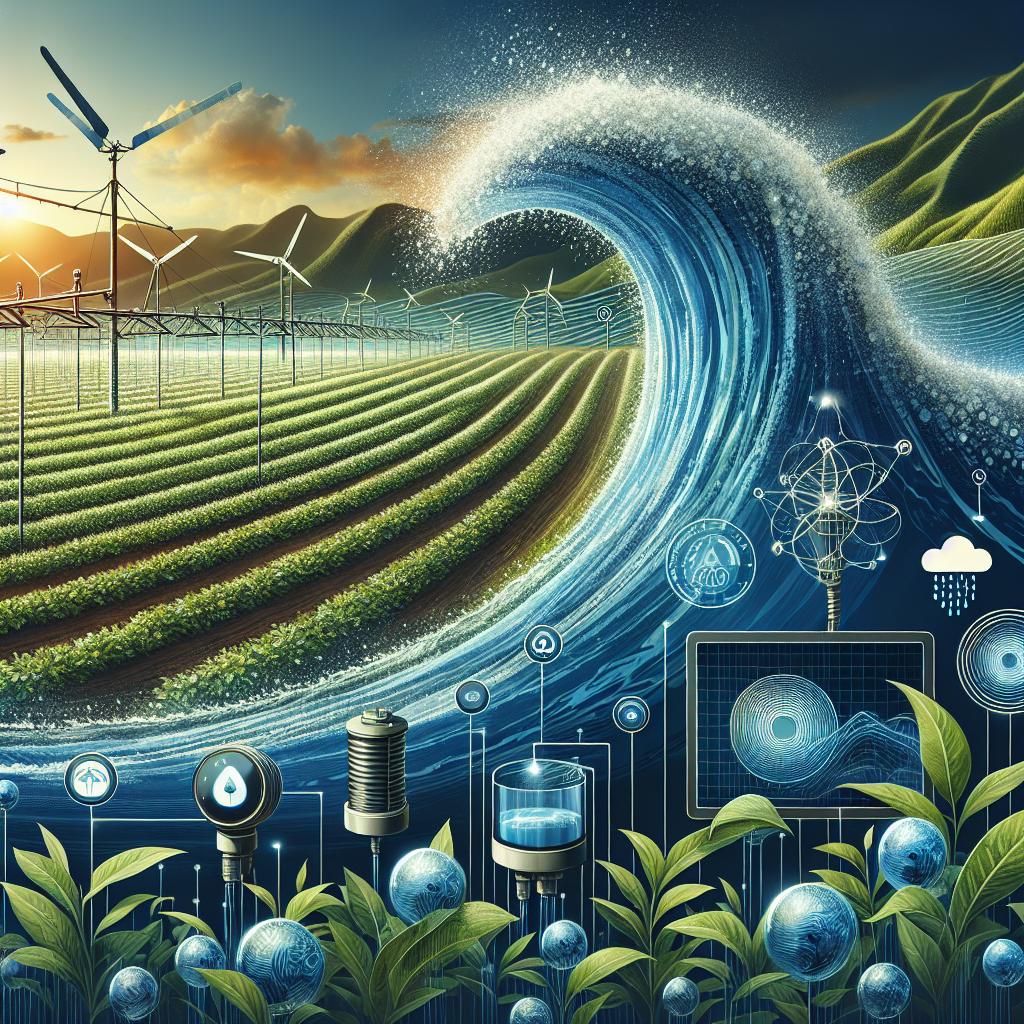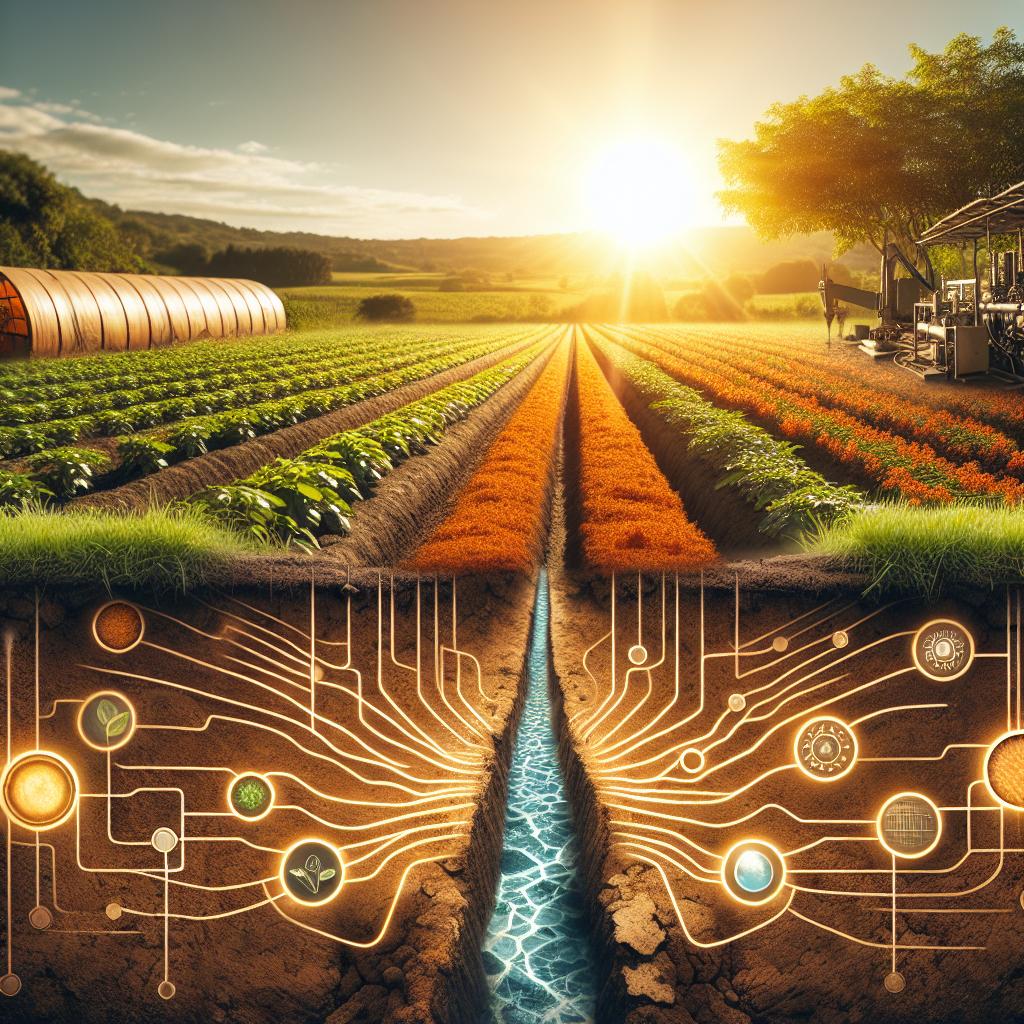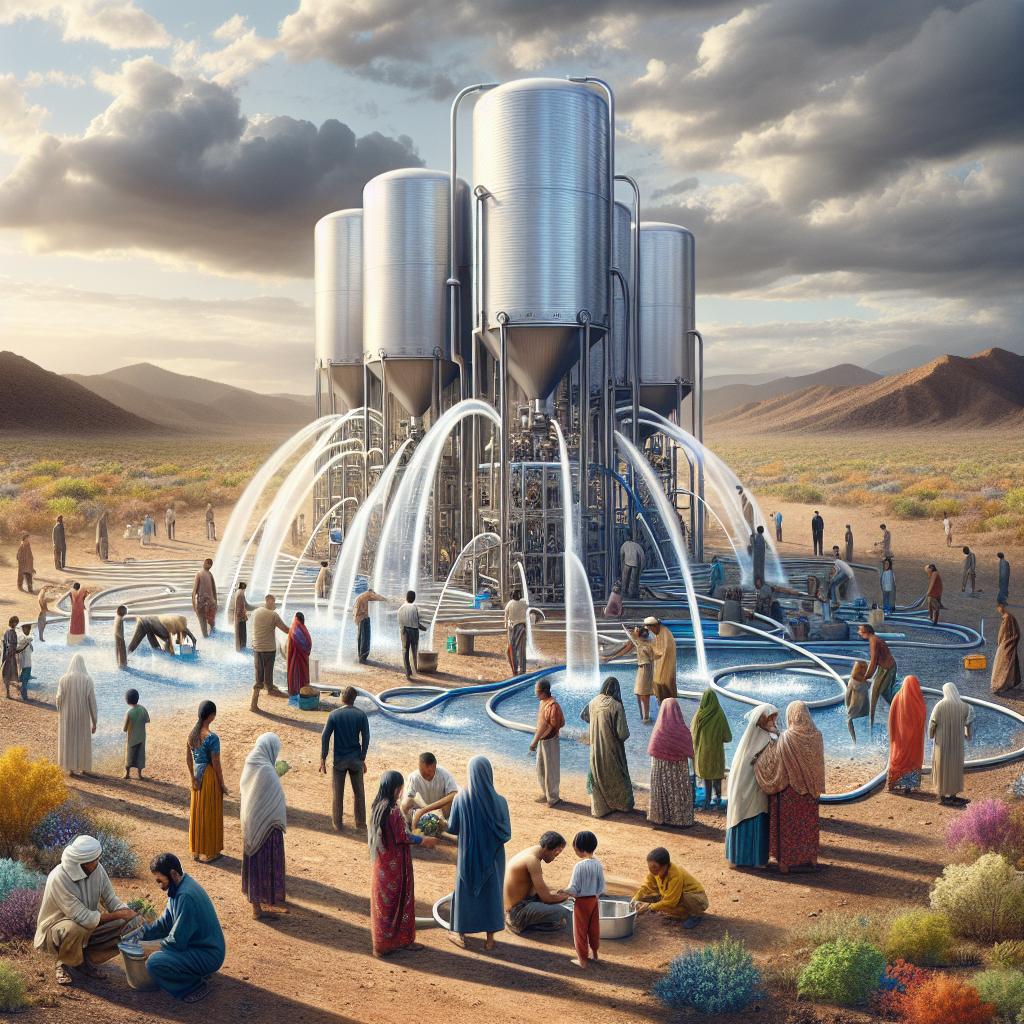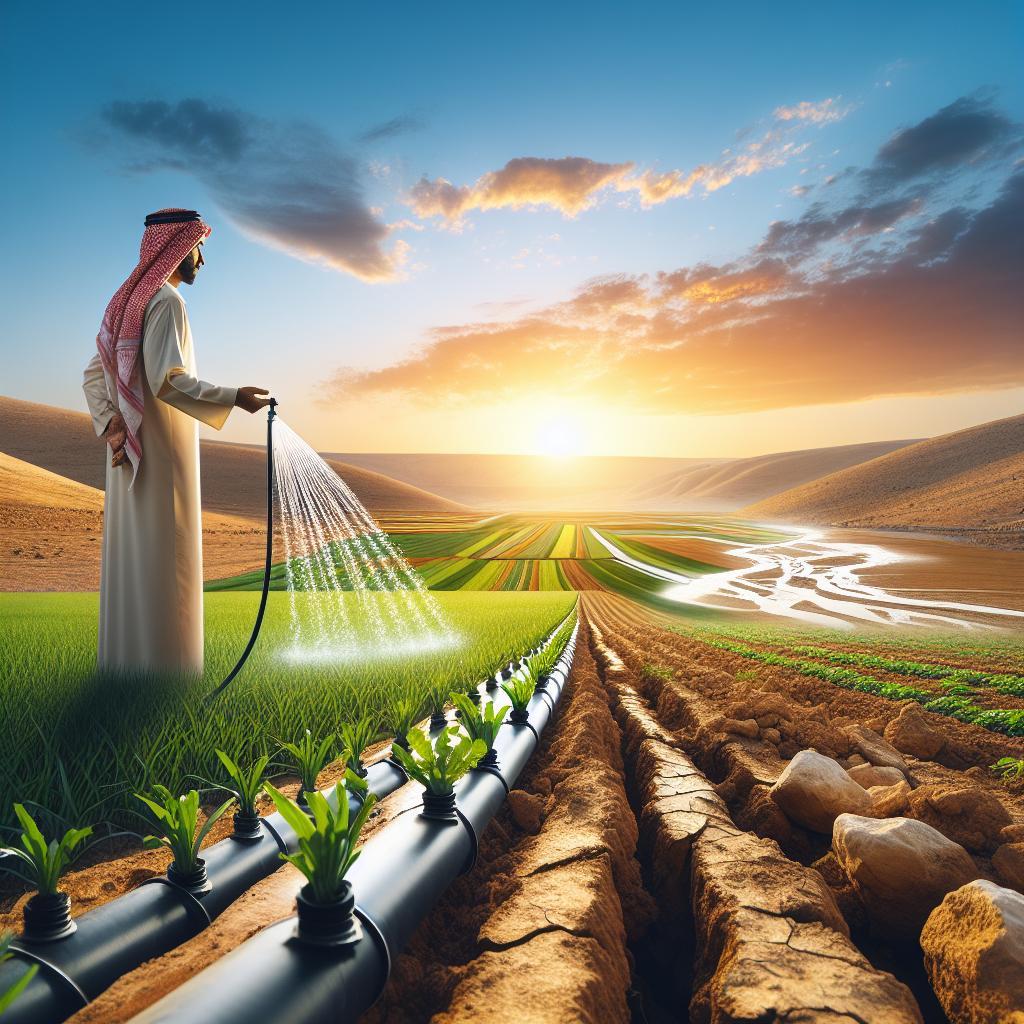This post may contain affiliate links which means I may receive a commission for purchases made through links. Learn more on my Private Policy page.
Addressing Water Scarcity Challenges with Efficient Irrigation Practices
As the sun rises over sprawling fields, the promise of a bountiful harvest hangs in the air, mingling with the crisp morning dew. Yet, beneath this picturesque scene lies a pressing reality: water scarcity is becoming an increasingly daunting challenge for farmers and communities worldwide.With climate change, population growth, and over-extraction of natural resources, the struggle to secure enough water for agriculture has never been more critical. But fear not! Innovative minds and age-old wisdom are coming together to usher in a new era of irrigation practices that are not only efficient but also sustainable. This article delves into the transformative potential of these practices, exploring how they can help us confront the water scarcity crisis while nurturing the land we rely on. Join us on this enlightening journey, where we celebrate the marriage of technology and tradition, ensuring that when it comes to watering our crops, every drop counts!
Innovative Irrigation Technologies Making Waves in Water Conservation
As the demand for sustainable agriculture intensifies, a wave of innovative irrigation technologies is leading the charge in water conservation.These advancements not only optimize water usage but also enhance crop yield, addressing the pressing need for efficient resource management. Some key technologies revolutionizing the landscape include:
- Drip Irrigation: This method delivers water directly to the plant roots, minimizing evaporation and runoff.
- Smart Irrigation Systems: Utilizing sensors and weather data, these systems adjust watering schedules automatically, ensuring plants receive just the right amount of water.
- Soil Moisture Sensors: By measuring moisture levels in the soil,farmers can water their crops only when necessary,reducing waste considerably.
- Pivot Irrigation: This technology rotates around a pivot point, allowing for even distribution of water across large fields, making it highly efficient.
Moreover, integrating these technologies into existing farming practices can lead to notable savings in water resources. A recent survey highlighted the effectiveness of these systems:
| Technology | Water savings (%) | Increase in Yield (%) |
|---|---|---|
| Drip Irrigation | 30-50 | 20-40 |
| Smart Irrigation | 25-40 | 15-30 |
| Soil Sensors | 20-35 | 10-25 |
| Pivot Irrigation | 30-60 | 15-35 |
These statistics reveal not just a reduction in water consumption but an overall enhancement of agricultural productivity. By adopting these technologies, farmers are not just conserving water— they are also paving the way for a more sustainable future.

Smart Scheduling: Timing Your Irrigation for Maximum Efficiency
Timing your irrigation intelligently can have a significant impact on conserving water while providing your plants with the nourishment they need. One of the most effective strategies is to irrigate during optimal hours,which typically occur early in the morning or late in the evening. This approach minimizes evaporation losses due to higher temperatures and wind speeds during the day. Consider these benefits of smart scheduling:
- Enhanced absorption: Water has a better chance to soak into the soil when temperatures are cooler.
- Reduced fungal diseases: Watering in the morning allows plants to dry out during the day, decreasing the risk of disease.
- Efficient water use: Applying water when plants need it most prevents waste and ensures optimal growth.
Along with adjusting the timing, utilizing tools like soil moisture sensors and weather forecasts can further optimize your irrigation scheduling. By leveraging data-driven approaches, you can determine the precise watering needs based on soil conditions and forecasted weather patterns. Below is a simple table demonstrating ideal irrigation times relative to temperature zones:
| Temperature Zone | Best Irrigation Time |
|---|---|
| 0-20°C (32-68°F) | Morning (6 AM – 10 AM) |
| 21-30°C (69-86°F) | Evening (6 PM – 9 PM) |
| 31°C+ (87°F+) | Early Morning (5 AM - 7 AM) |

Soil Health Matters: Enhancing Water Retention through Sustainable Practices
Healthy soil is fundamental to addressing the challenges of water scarcity.When soil is rich in organic matter, it acts like a sponge, capable of holding and slowly releasing water, which significantly enhances irrigation efficiency. Implementing sustainable practices such as crop rotation, cover cropping, and reduced tillage not only nourishes the soil but also boosts its ability to retain moisture. By fostering a diverse soil ecosystem,farmers can improve the infiltration of water,minimizing runoff and evaporation.Some key benefits include:
- Increased water retention: Healthy soil retains more water for longer periods, reducing the need for frequent irrigation.
- Improved nutrient uptake: Nutrient-rich soil supports healthier plant growth, ensuring crops make the best use of available water.
- enhanced biodiversity: A rich microbial community contributes to soil structure and moisture retention.
Moreover, integrating practices such as mulching and composting can dramatically enhance soil health, further contributing to water conservation efforts. Mulch, for instance, helps to regulate soil temperature and reduce evaporation, while compost introduces beneficial microorganisms that optimize soil structure and fertility. The table below highlights simple practices and their positive impact on soil health:
| Practice | Impact on Soil Health |
|---|---|
| Cover Cropping | Prevents soil erosion and improves structure. |
| Crop Rotation | Enhances nutrient availability and biodiversity. |
| Mulching | Reduces evaporation and regulates temperature. |
| Composting | Increases organic matter and microbial activity. |

Community Collaboration: Empowering Local Solutions for Water Scarcity
In many regions grappling with water scarcity, communities are coming together to explore innovative approaches to irrigation that not only sustain crops but also conserve precious water resources. By leveraging local knowledge and expertise, these collaborative efforts empower residents to adopt efficient irrigation practices tailored to their specific climates and soil types. Initiatives like community workshops, knowledge-sharing sessions, and cooperative farming efforts allow participants to learn about:
- Drip irrigation: A method that delivers water directly to the plant roots, minimizing evaporation and runoff.
- Rainwater harvesting: Systems for collecting and storing rainwater for later use in irrigation.
- Soil moisture sensors: Tools that help determine the optimal watering times based on real-time soil conditions.
Collaboration also fosters a shared sense of obligation toward sustainable water use.Local projects often unite farmers, environmental groups, and policymakers to establish management plans that maximize agricultural productivity while preserving the ecosystem. This collective action not only addresses immediate water needs but also builds resilience against future challenges. Community gardens,as a notable example,serve as a living classroom where participants can experiment with various irrigation methods and collectively monitor their effectiveness.
| Practice | Benefits |
|---|---|
| drip Irrigation | Reduces water usage by 30-50% while increasing crop yield. |
| Rainwater Harvesting | Reduces dependency on groundwater and lowers water costs. |
| Soil Moisture Sensors | Optimizes watering schedules, conserving both time and resources. |
in summary
as we turn off the tap on our exploration of water scarcity and its challenges, let’s take a moment to reflect on a vital truth: every drop counts. Efficient irrigation practices are not just a means of nurturing our crops; they are lifelines for our communities, ecosystems, and future generations. Like a well-tended garden, our awareness can bloom into action, creating a sustainable path forward.
So, as you close this chapter, remember that the journey doesn’t end here—it’s just beginning. Whether you’re a farmer, a policy maker, or simply a concerned citizen, there’s plenty you can do. Advocate for smarter water management,embrace innovative technologies,or dive into community initiatives that promote responsible water use. Together, we can cultivate solutions that not only quench our thirst today but also secure a vibrant, water-rich tomorrow.
Life may ebb and flow like a river, but with our commitment to efficient irrigation practices, we can ensure that the waters keep flowing. Here’s to making every drop a part of the solution, one garden, one community, one planet at a time! 🌱💧
This post may contain affiliate links which means I may receive a commission for purchases made through links. Learn more on my Private Policy page.

